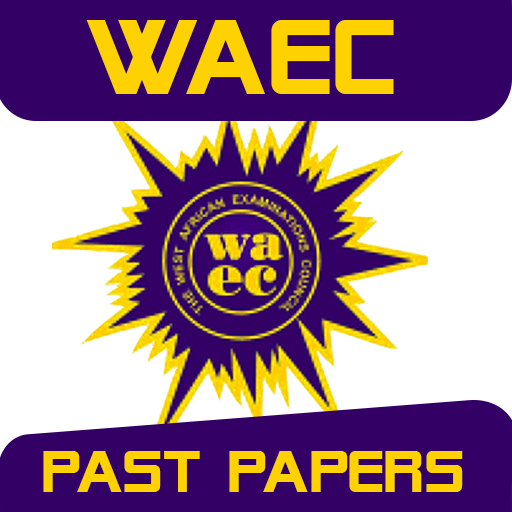WAEC PHYSICS PAST QUESTION PAPER 2020: The questions set were within the scope of the syllabus. The standard of the questions compared well with the previous ones. The performance of candidates performance for this examination was fair. Few candidates responded fairly well to the questions, but the general performance was fairly satisfactory, compared to the previous years’.
The West African Senior School Certificate Examination (WASSCE) for Private Candidates, 2020 – First Series formerly known as GCE was write by Private Candidates January/February 2020. Candidates are expected to answer eight questions in all from this paper (Essay). Five questions from Part 1 and three questions from Part 11. Find below both PDF and types versions of the question.
WAEC PHYSICS PAST QUESTION PAPER 2020 – PC (PDF VERSION)
WAEC PHYSICS PAST QUESTION PAPER 2020 – PC (TYPED VERSION) ESSAY (PART 1)
Instruction: Answer any five questions from this part. All question carry equal marks.
- A physical quantity Q is given by the expression Q = ½ ρV2 , where ρ is density and v is velocity.
- (i) determine the dimension of Q.
- (ii) What physical quantity does Q represents?
- A missile is to be launched such that it drops in an enemy’s camp. If the maximum horizontal distance between the point of launch and the enemy’s camp is 7200km, at what speed should the missile be launched so that it lands in the camp?
- List three types of artificial satellites.
- The diagram below is a graph of load against extension for a wire under varying tension. Identify the:

- (a) segment in which Hooke’s law is obeyed;
- (b) segment where elasticity holds;
- (c) yield point
5. (a) Why are optical fibres wrapped in bundles? (b) By what optical phenomenon does an optical fibre transmit light along its axis?
6. (a) Distinguish between metals and semiconductors in terms of their energy bands. (b) State the effect on increasing temperature on the electrical resistance of semiconductors.
7. Draw the output waveform for the circuit diagram illustrated below.

WAEC PHYSICS PAST QUESTION PAPER 2020 – PC (TYPED VERSION) ESSAY (PART II)
8. (a) A jet plane starts from rest with an acceleration of 3 m/s2 and makes a run for 30s before taking off. Calculate the: (i) distance travelled before take-off; (ii) velocity of the plane at take off.
(b) (i) Differentiate between elastic collision and inelastic collision; Two bodies of masses 6kg and 4kg moving in opposite directions with velocities of 9m/s and 7m/s respectively, collide and move together. Calculate their common velocity.
(c) State: (i) the Pascal’s Principle; (ii) two applications of the Pascal’s principle; (iii) the condition for a body to float in a liquid.
9. (a) Define each of the following terms: (i) humidity (ii) saturated vapour.
(b) Explain each of the following observations: (i) steam at 100oC causes more severe burns than water at 100oC; (ii) water pipes sometimes burst during very cold weather.
(c) State two differences between heat and temperature.
(d) A simple pendulum has a period of 4.2s. When its length is shortened by 1m, the period becomes 3.7s. Calculate the: (i) original length of the pendulum; (ii) acceleration due to gravity. [ Take π = 3.142]
10. (a) (i) State two differences between the lens of the human eye and the lens of the camera. (ii) What is meant by accommodation of the eye?
(b) Explain each of the following terms as applied in sounds: (i) overtones; (ii) resonance (iii) fundamental note
(c) Define the principal focus of a diverging lens.
(d) A diverging lens of focal length 10cm forms an image 5cm high at a distance of 8cm from the lens. Calculate the: (i) object distance; (ii) image height
11. (a) (i) Define capacitance of a capacitor; (ii) What is the reason for putting a dielectric between the plates of a capacitor? (iii) State two applications of capacitors. (iv) The potential difference between the plates of a capacitor is 135V and the plate separation is 1.5cm. If a 4.5 x 10-15kg charged oil drop between the plates is stationary, calculate the magnitude of the charge on the oil drop.
(b) Define electric field intensity at a point.
(c) Two point charges of magnitudes +5.0 x 10-5 C and +3.0 x 10-5 C situated in a vacuum, are separated by a distance of 2.0cm.Determine the: (i) electric field intensity at a point, P, midway between the charges; (ii) force on a +2.0 x 10-6 C charged body at P. [ ¼Πɛ0 = 9.0 x 109 Nm2C-2]
12. (a) (i) Define natural radioactivity; (ii) State the relationship between the decay constant λ, and the half life, t½, of a radioactive decay process; (iii) A radioactive element has a decay constant of 4.6 x 10-2 atoms per minute. The initial reading on a detector for radiations of this element in 1600 per minute. Calculate the time taken for the rate to fall to 100 per minute.
(b) (i) What are cathode rays? (ii) State four properties of cathode rays.
(c) (i) State the energy transformations which take place during the operation of X-ray tube. (ii) State two uses of X-rays
For more information about WAEC visit: waeconline.org.ng

